In Ohio’s diverse ecosystems, 11 captivating owl species grace the skies, each contributing to the intricate tapestry of the state’s avian life.
From the iconic Great Horned Owl to the elusive Northern Saw-whet, these nocturnal hunters have carved their niches in woodlands, grasslands, and urban areas.
This compilation explores these magnificent birds’ unique characteristics, behaviors, and habitats, shedding light on their role in maintaining ecological balance.
Join us on a journey through the enchanting world of Ohio’s owls, unveiling the secrets of their silent flights, distinctive calls, and the conservation challenges they face in the rapidly changing landscapes of the Buckeye State. Stay focused.
11 Owls in Ohio
In the woodlands and open spaces of Ohio, a diverse array of owls grace the skies, each with its unique characteristics and adaptations.
From the elusive Northern Saw-whet Owl to the ground-dwelling Burrowing Owl and the majestic Great Grey Owl, these remarkable birds contribute to the rich tapestry of Ohio’s avian life. Explore their fascinating lifestyles below.
1. Barn Owl
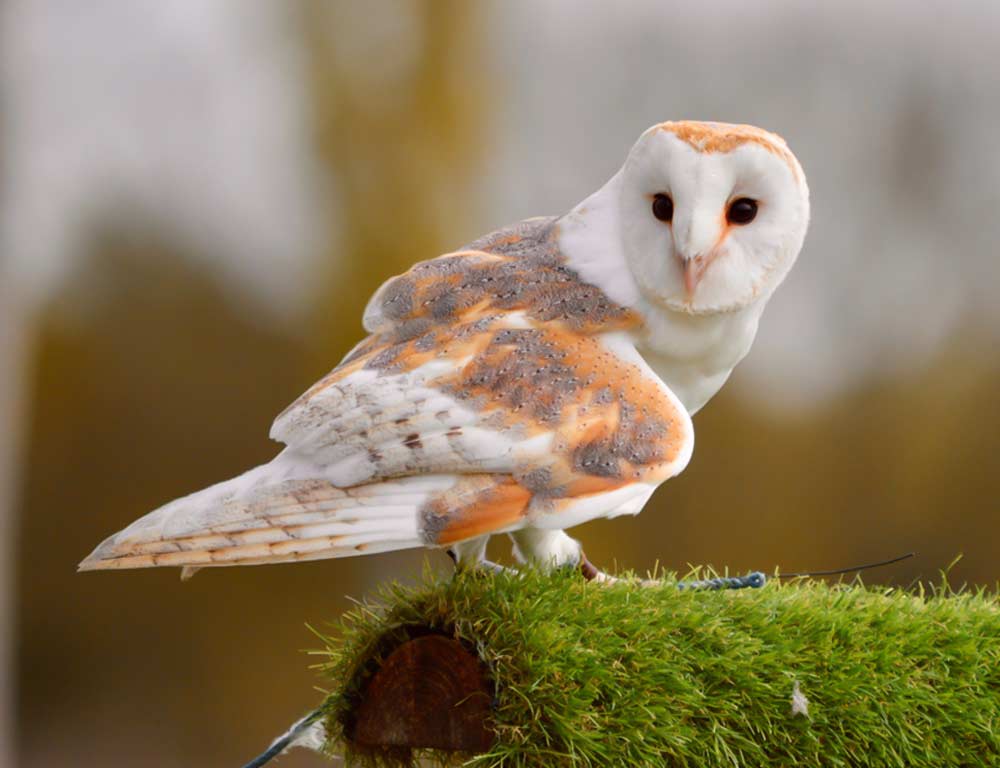
- Scientific name: Tyto alba
- Population: Stable
- Life span: 1-2 years in the wild
- Size: 12-15 inches
- Weight: 14-24 ounces
- Food: Small mammals, primarily rodents
- Wingspan: 42-43 inches
- Status: Common
The Barn Owl, with its distinctive heart-shaped facial disc, is a nocturnal hunter found in various habitats across Ohio, including farmlands, grasslands, and urban areas. It is an exceptional rodent controller, preying on mice and voles.
Their keen sense of hearing allows them to locate prey in complete darkness. Nesting in tree hollows, barns, or other structures, they lay eggs and raise their young in secluded locations.
Barn Owls are known for their silent flight, aided by specialized feathers that muffle the sound. Despite being common, they face threats from habitat loss and pesticide exposure.
2. Great Horned Owl
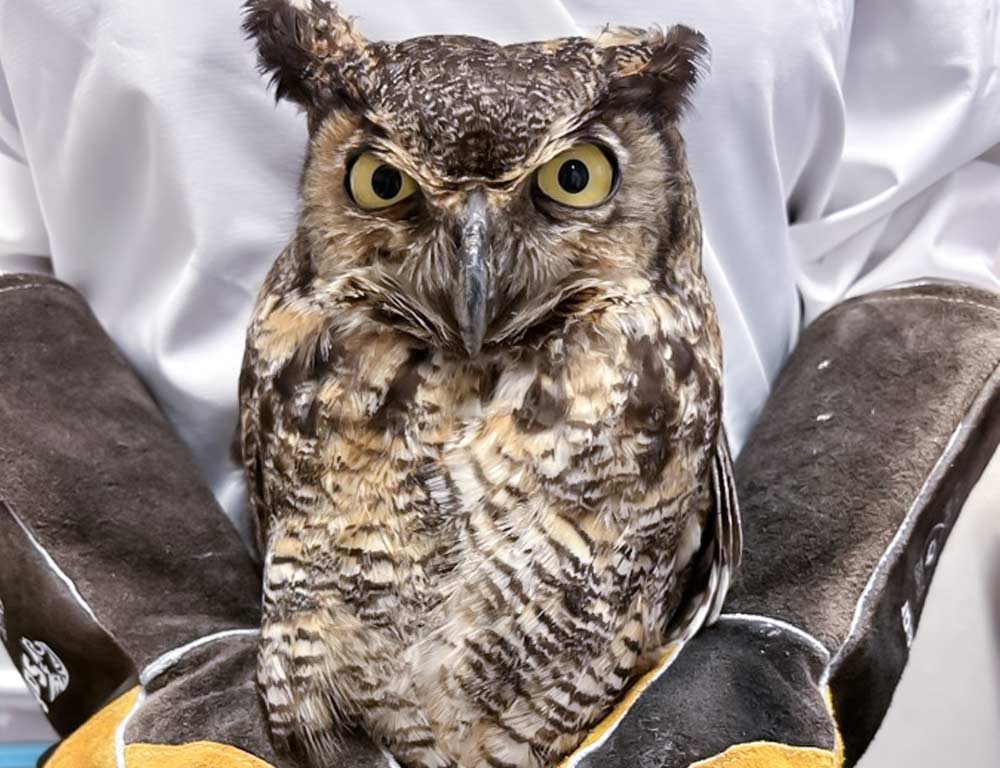
- Scientific name: Bubo virginianus
- Population: Abundant
- Life span: Up to 20 years
- Size: 18-25 inches
- Weight: 2-5.5 pounds
- Food: Wide variety, including mammals, birds, and reptiles
- Wingspan: 3.3-4.8 feet
- Status: Common
As one of Ohio’s largest owls, the Great Horned Owl is highly adaptable, inhabiting forests, deserts, and urban areas.
Its diet is diverse, hunting everything from rabbits to other owls. Nesting in trees or repurposing abandoned nests, these owls are known for their powerful talons and excellent vision in low light.
Great Horned Owls are monogamous and often remain in the same territory for years. Their adaptability contributes to their widespread presence, and they play a crucial role in controlling various animal populations.
3. Barred Owl
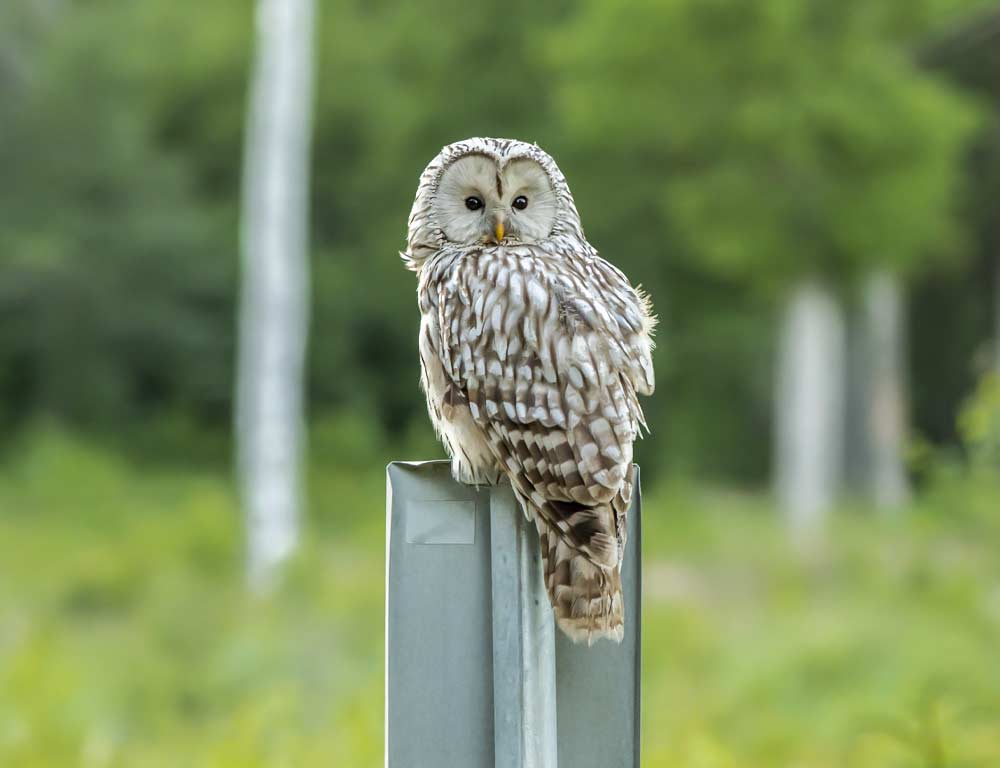
- Scientific name: Strix varia
- Population: Stable
- Life span: 10 years
- Size: 16-25 inches
- Weight: 1-2.3 pounds
- Food: Mainly small mammals, birds, amphibians, and invertebrates
- Wingspan: 3.3-3.8 feet
- Status: Common
The Barred Owl, known for its distinctive hooting calls, resides in dense forests and wooded areas throughout Ohio. Its diverse diet includes rodents, birds, and even small mammals.
These owls are adaptable to different habitats and are known for their territorial behavior. Barred Owls nest in tree cavities and may use abandoned hawk or squirrel nests.
They are primarily monogamous and establish strong bonds with their mates. Threats to Barred Owls include habitat loss and collisions with vehicles.
4. Eastern Screech Owl
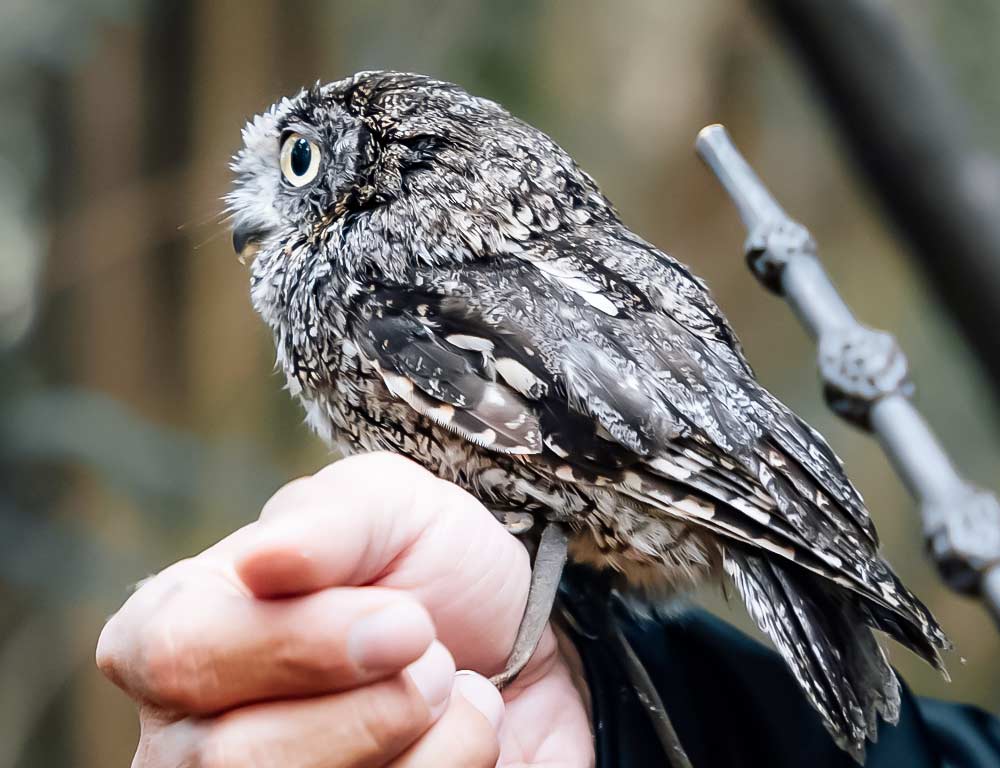
- Scientific name: Megascops asio
- Population: Stable
- Life span: 8-10 years
- Size: 6-10 inches
- Weight: 4-9 ounces
- Food: Mainly insects, small mammals, and birds
- Wingspan: 18-24 inches
- Status: Common
The Eastern Screech Owl is a small owl found in woodlands, parks, and urban areas across Ohio. Despite their small size, they are formidable predators, feeding on insects, small mammals, and birds.
Their plumage can vary from red to gray, allowing for excellent camouflage. Eastern Screech Owls are cavity nesters, using abandoned woodpecker holes or nest boxes.
They are adaptable to various habitats, including suburban areas. These owls are territorial, and their haunting trill-like calls are often heard at dusk and dawn. Threats to their populations include habitat loss and competition for nesting sites.
5. Snowy Owl
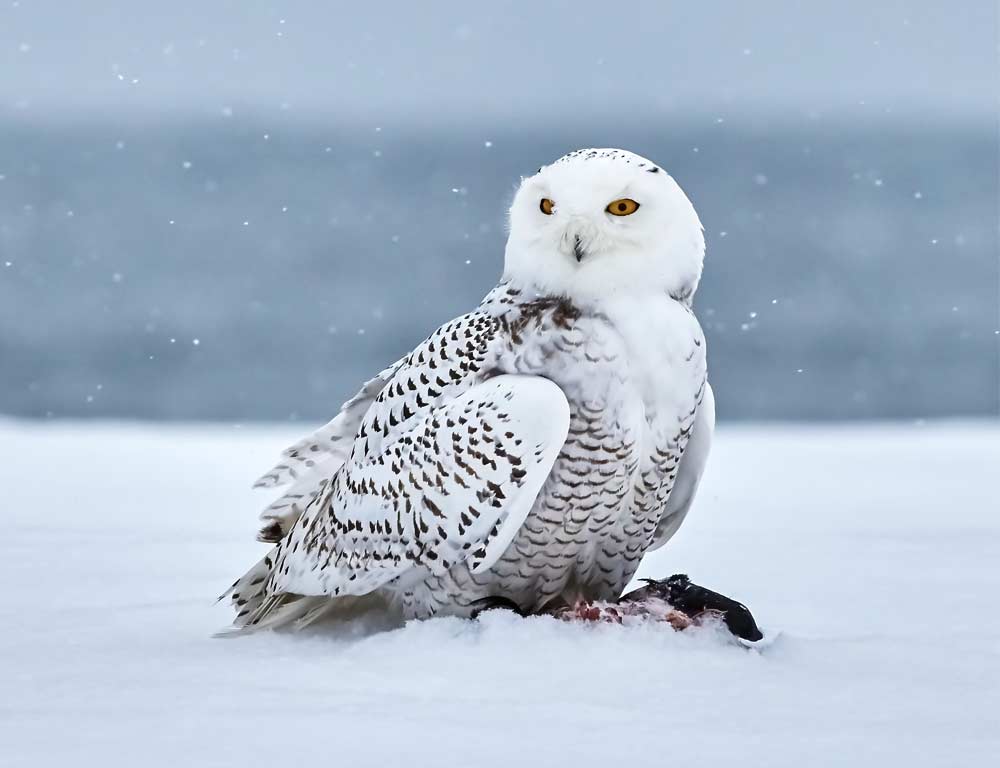
- Scientific name: Bubo scandiacus
- Population: Varies, migratory species
- Life span: Up to 10 years
- Size: 20-28 inches
- Weight: 3.5-6.6 pounds
- Food: Mainly lemmings and other small mammals, also birds
- Wingspan: 4.2-4.8 feet
- Status: Irregular visitor, occasional winter resident
The Snowy Owl, known for its distinctive white plumage, is a circumpolar species that occasionally visits Ohio during winter.
They are highly adapted to arctic tundra environments but can be found in open fields and coastal areas during their winter migration. Snowy Owls are diurnal hunters, relying on their keen eyesight to locate prey.
Lemmings are a primary food source but consume birds and other small mammals. They nest on the ground in the Arctic and may face challenges in southern climates due to habitat loss and collisions.
6. Long-eared Owl
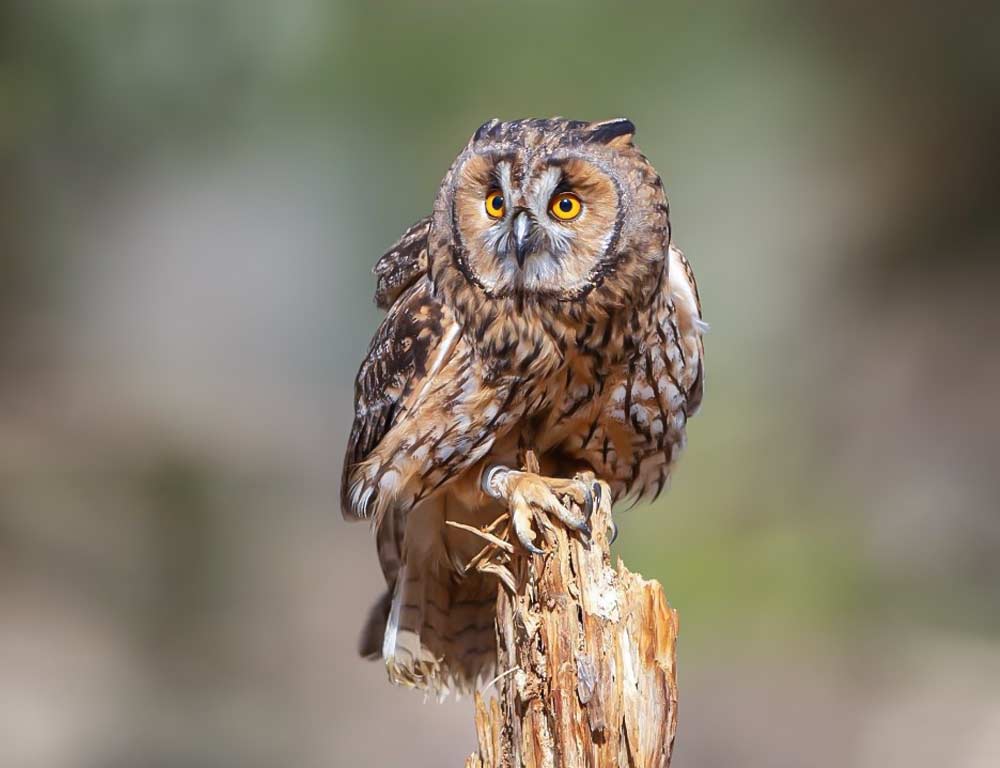
- Scientific name: Asio otus
- Population: Generally stable
- Life span: 4-10 years
- Size: 13-16 inches
- Weight: 7-16 ounces
- Food: Mainly small mammals, occasionally birds
- Wingspan: 35-39 inches
- Status: Common but elusive
The Long-eared Owl is a medium-sized owl with long ear tufts that are not always visible. It inhabits woodlands, marshes, and open country across Ohio.
Primarily nocturnal, these owls hunt small mammals such as mice and voles. They often roost in dense vegetation during the day, making them challenging to spot.
Long-eared Owls are known for their social behavior and may roost in groups, especially during the non-breeding season. Threats to their populations include habitat loss and disturbance during the breeding season.
7. Short-eared Owl
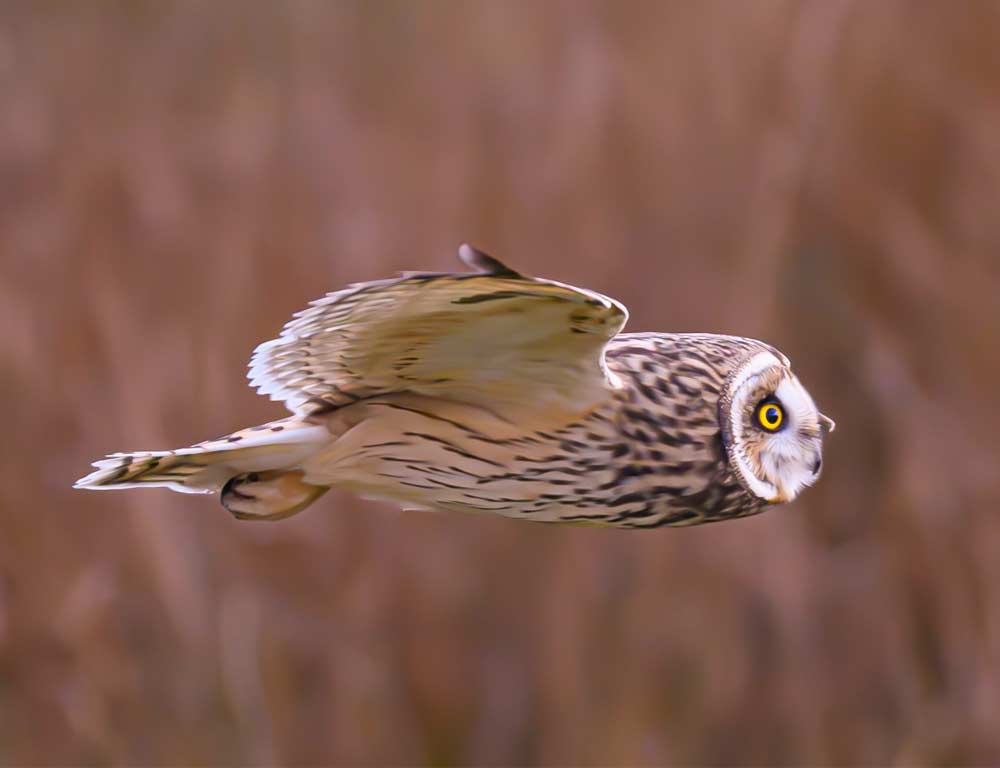
- Scientific name: Asio flammeus
- Population: Varies, migratory species
- Life span: 3-5 years
- Size: 13-17 inches
- Weight: 7-17 ounces
- Food: Mainly small mammals, occasionally birds
- Wingspan: 33-43 inches
- Status: Irregular visitor, occasional winter resident
The Short-eared Owl is a medium-sized owl that inhabits open grasslands, marshes, and fields. It is known for its diurnal hunting habits, especially during winter.
Short-eared Owls primarily prey on small mammals, such as voles and mice, and may also consume birds. They roost on the ground and are highly nomadic, moving to areas with abundant prey.
Threats to their populations include habitat loss, especially the conversion of grasslands to agriculture, and disturbance during the breeding season.
8. Great Grey Owl
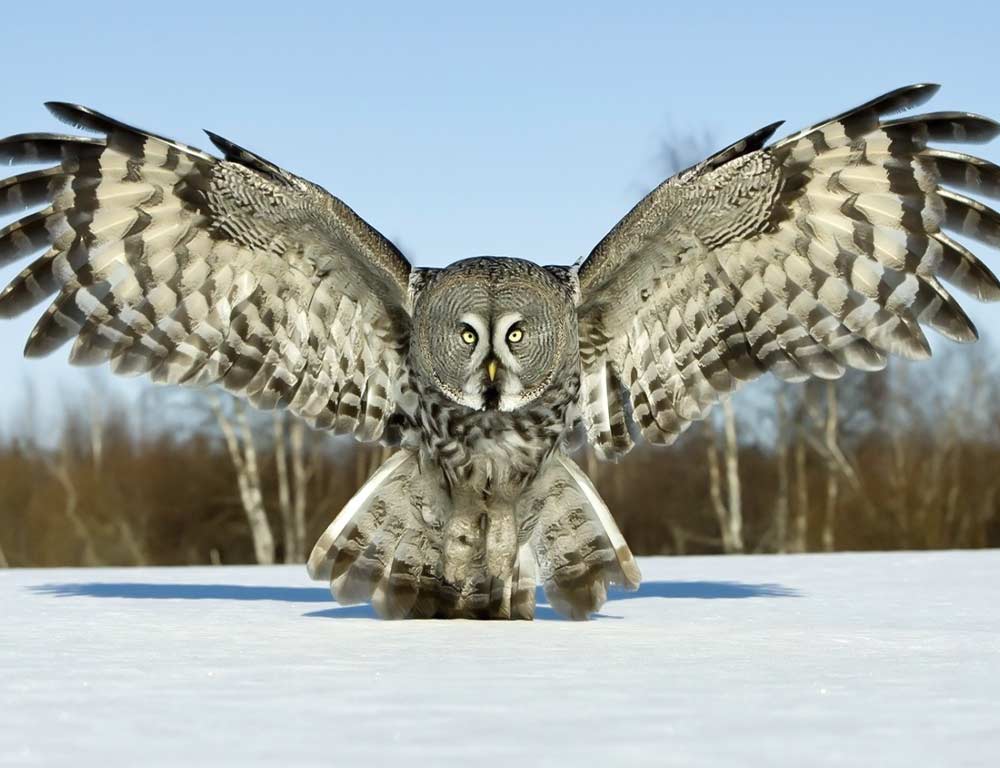
- Scientific name: Strix nebulosa
- Population: Generally stable
- Life span: Up to 13 years
- Size: 24-33 inches
- Weight: 1.5-3.5 pounds
- Food: Mainly small mammals, especially rodents
- Wingspan: 53-60 inches
- Status: Rare winter visitor
The Great Grey Owl is a large owl species with a prominent facial disk and grey plumage. It typically inhabits dense coniferous forests but may visit Ohio during the winter.
Their diet consists mainly of small mammals, particularly rodents like voles and mice. Great Grey Owls are known for their exceptional hearing, allowing them to locate prey beneath the snow.
They nest in trees and are highly territorial during the breeding season. Threats to their populations include habitat loss, especially the fragmentation of their forested habitats.
9. Northern Saw-whet Owl
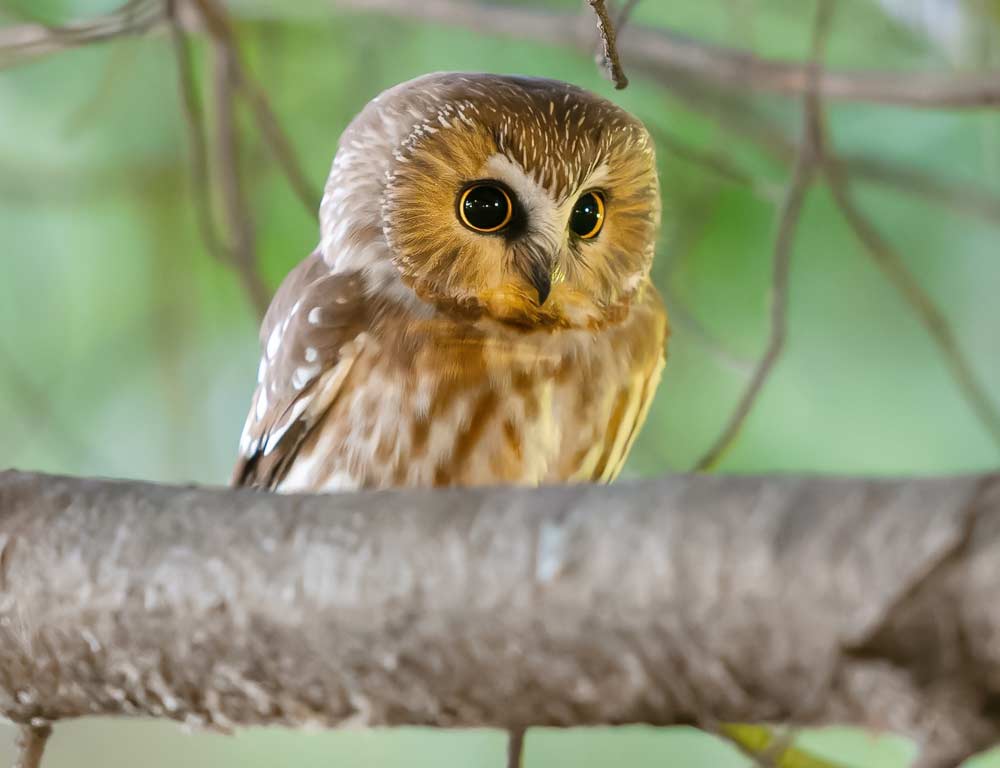
- Scientific name: Aegolius acadicus
- Population: Generally stable
- Life span: 3-7 years
- Size: 7-8 inches
- Weight: 2-5 ounces
- Food: Mainly small mammals, insects, and birds
- Wingspan: 16-18 inches
- Status: Common but elusive
The Northern Saw-whet Owl is a small, secretive owl species found in coniferous and mixed forests. Its name comes from the sound of its repetitive whistle, resembling the noise made when sharpening a saw.
These nocturnal hunters primarily feed on small mammals, including mice and voles, but they also consume insects and birds.
Saw-whet Owls are cavity nesters, utilizing abandoned woodpecker holes or nest boxes. They are known for their migratory behavior, and their populations face threats from habitat loss, collisions, and predation.
10. Burrowing Owl
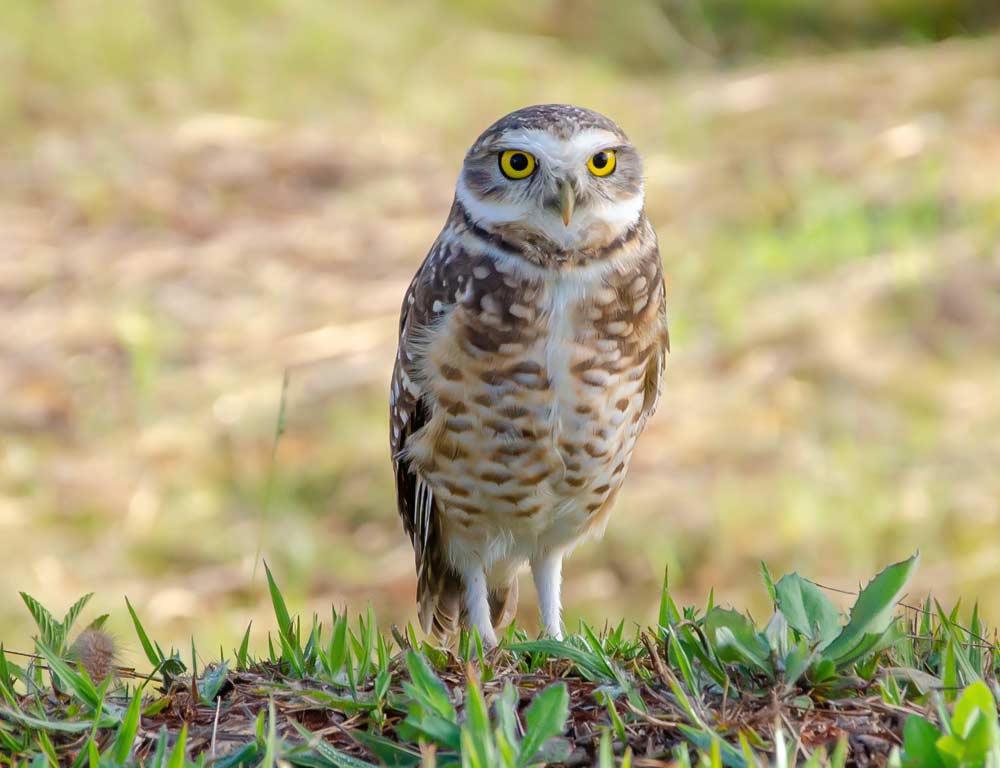
- Scientific name: Athene cunicularia
- Population: Declining in some areas
- Life span: 6-8 years
- Size: 7-10 inches
- Weight: 5-8 ounces
- Food: Mainly insects, small mammals, and reptiles
- Wingspan: 20-24 inches
- Status: Threatened in some regions
The Burrowing Owl is a small, ground-dwelling owl that inhabits open grasslands, deserts, and agricultural areas. They are known for nesting in abandoned burrows, often created by mammals like prairie dogs.
Burrowing Owls primarily feed on insects, small mammals, and reptiles. They are diurnal hunters and may be seen perched near their burrows during the day.
Threats to their populations include habitat loss due to urbanization, agriculture, and decreased available burrowing mammals. Conservation efforts involve the protection of nesting sites and habitat restoration.
11. Boreal Owl
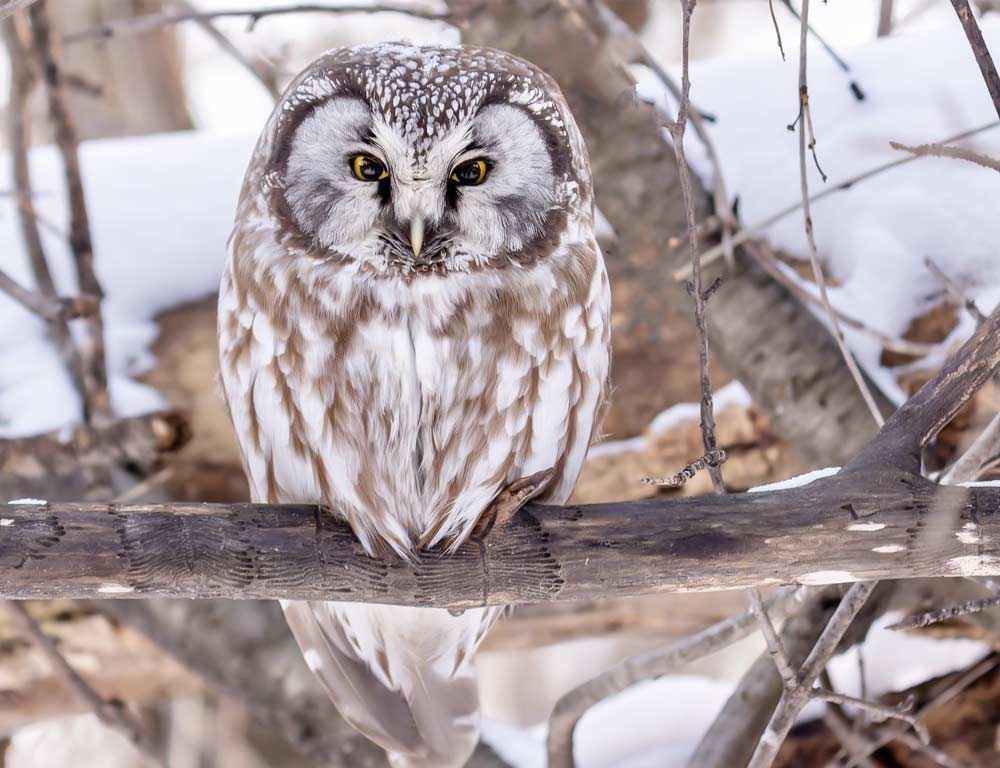
- Scientific name: Aegolius funereus
- Population: Varies, dependent on prey abundance
- Life span: 3-5 years
- Size: 8-12 inches
- Weight: 3-8 ounces
- Food: Mainly small mammals and birds
- Wingspan: 21-24 inches
- Status: Generally stable
The Boreal Owl is a medium-sized owl found in boreal forests across northern regions. They have a dark facial disk and are nocturnal hunters, preying on small mammals and birds.
Boreal Owls often nest in tree cavities or use abandoned nests of other birds. Their populations are closely linked to prey availability, particularly voles and other small rodents.
Despite their elusive nature, they may be more visible during periods of high prey abundance. Conservation concerns include habitat fragmentation and the potential impacts of climate change on prey populations.
Wrapping Up
In the heart of Ohio’s diverse landscapes, the enchanting presence of owls adds a captivating dimension to the state’s wildlife.
From silent hunters like the Barn Owl to the nomadic Short-eared Owl, each species plays a crucial role in maintaining ecological balance.
Their unique behaviors, habitats, and conservation challenges underscore the importance of understanding and preserving these magnificent birds for future generations to marvel at. Thank you very much.